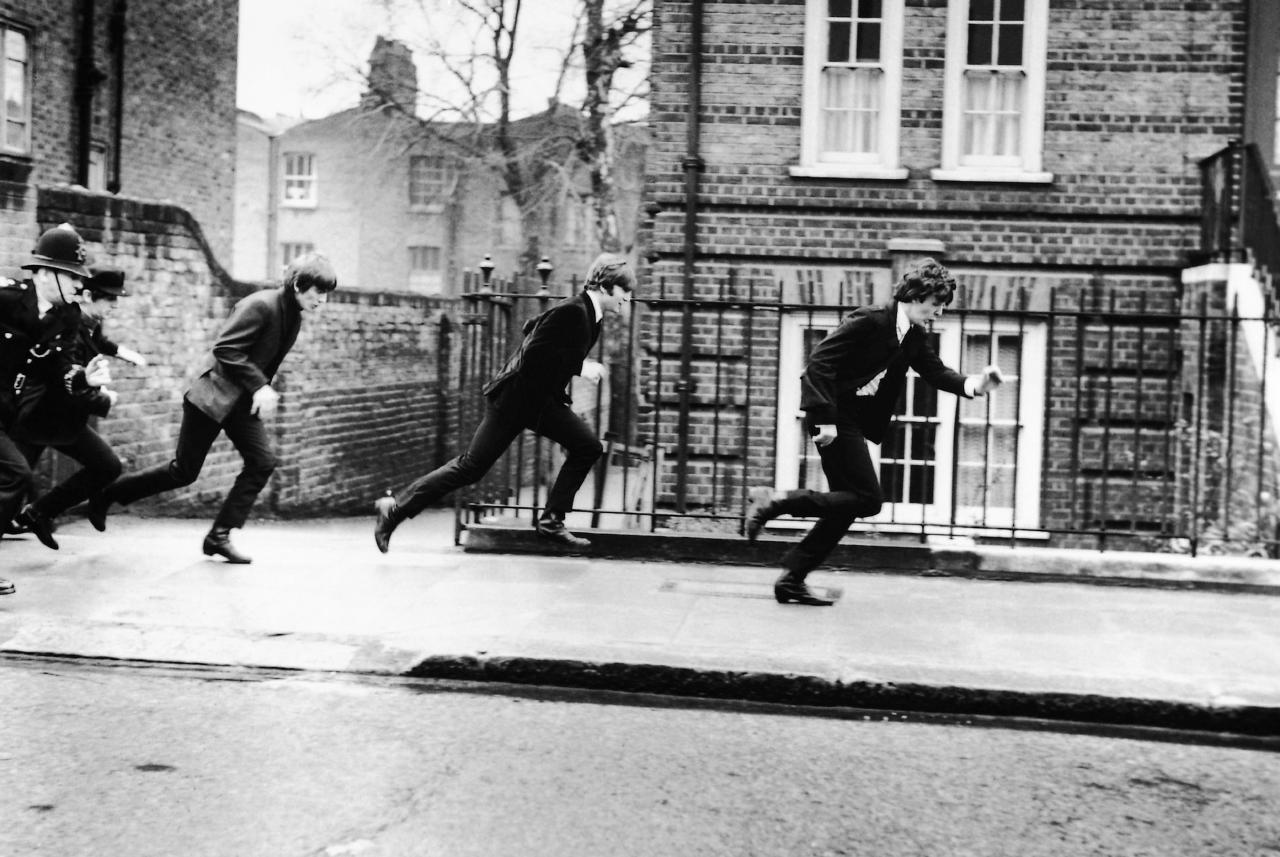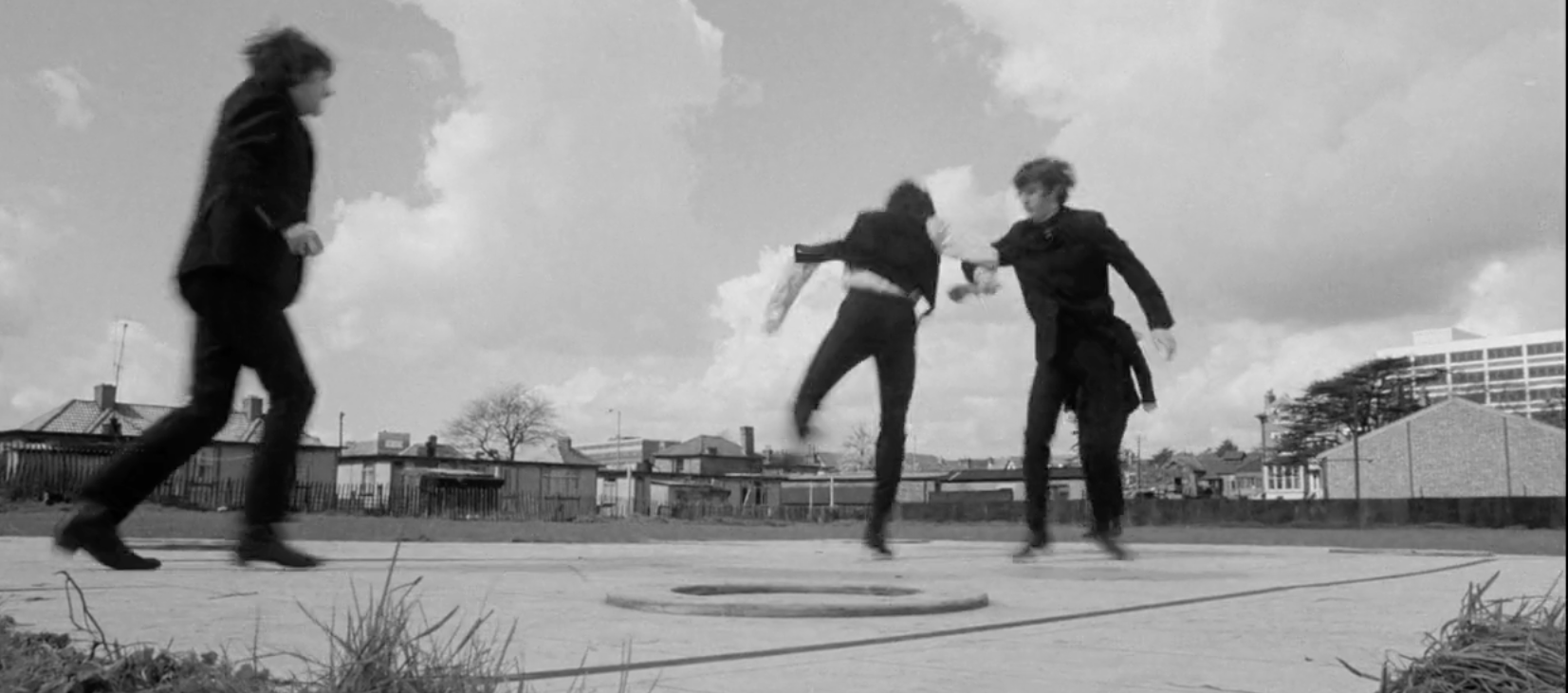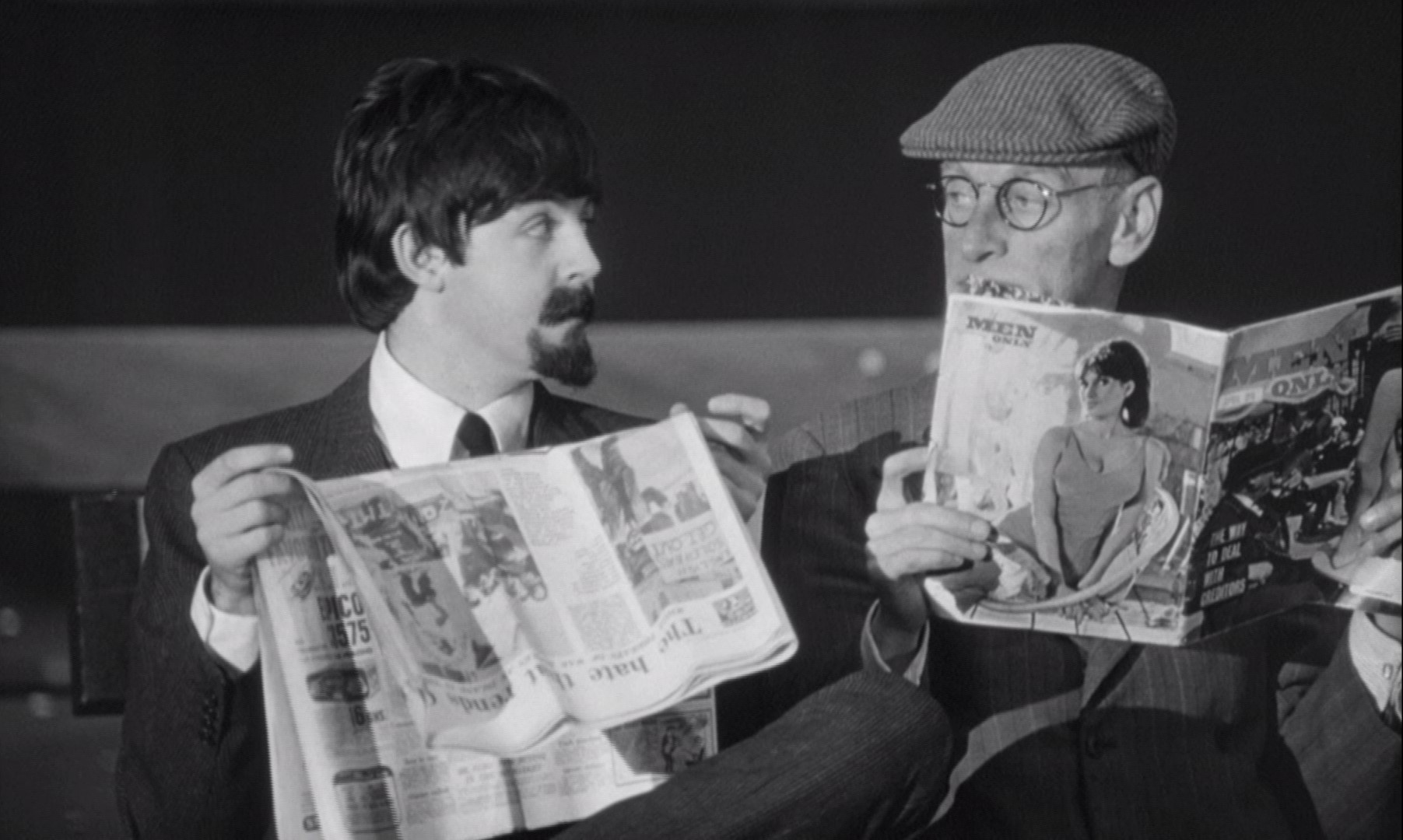How is “A Hard Day’s Night” a 90-minute commercial that became art?
The Beatles’ 1964 flick A Hard Day’s Night is one of the greatest films ever made that isn’t about anything. Its filmmakers were issued a meager budget and limited shooting time, the film being viewed by United Artists more as a feature-length commercial for the Beatles’ next record than an actual movie. After all, the year was 1964 and Beatlemania was in full swing. UA could have turned a profit if they released a feature-length film of The Fab Four doing laundry and ironing their shirts. The fact the word “Beatles” is never actually spoken in the film is proof. The Beatles go without saying.
The studio correctly assumed Beatlemania wouldn’t last forever, and this was the first of three feature-length moves commissioned to cash in on the phenomenon while it was at its peak. Consequently, that cultural fervor is what became the central focus of the film: John, Paul, Ringo, and George being odd and unorthodox Englishmen, running about and cajoling however they please as they attempt to navigate the unprecedented waters of their extreme fame. In that frame, the film ends up developing a legacy well beyond a simple portrait of the band at work and play—A Hard Day’s Night is a seminal work of cinema that is a delight to watch.

Birth Movies Death writes, “There’s not much story to A Hard Day’s Night - the band travels to London for a TV gig and Paul’s irascible grandfather gets them into some minor trouble along the way - but the looseness of the structure is the key to the film’s immense joyfulness. The Fab Four get to run and jump and mug their way through barely-connected scenarios, always aiming at optimal fun. There’s a constant cartoony energy that sails the film from scene to scene, taking occasional breaks for The Beatles to play a song.”
Though that description reads with an air of superficiality, A Hard Day’s Night becomes something deeper. As they boys play fictionalized versions of their now-legendary selves, we see the early stages of the traits and personalities that would later come to define them.
As The Dissolve adds, “A Hard Day’s Night finds the band reveling in its then-new fame while trying to escape it, if only for a few moments at a time. John, Paul, George, and Ringo cast a skeptical eye at the machinery of stardom, but they never seem cynical about what it means to be The Beatles in 1964, and never do anything to give those screaming throngs any reason to grow disillusioned with their idols. The music is as pure as the motives of the people making it: young men, just a few years older than the audiences they’re working into a frenzy, who want nothing more than to express themselves and please the crowd. It’s just the rest of the world, with its endless questions and demands, that keeps getting in the way.”
That last sentence explains what supplies the only semblance of drama in the film’s otherwise quirky narrative: figuring out how to balance their crazy lives. When following the band to write the script, Alun Owen noted their lives were like “a train and a room and a car and a room and a room and a room,” a line that made its way into the film.
Slant Magazine writes, “The famous opening sequence, of the Beatles running, hiding, and disguising themselves from a shrieking horde of fans as they attempt to make their train, sets a precedent: The film isn’t only a product of Beatlemania, but a concentrated study of it, driven by an anarchic sense of humor that pokes fun at the band’s image. It’s impossible not to love their fresh-faced boyishness, but their wry, self-aware behavior lets the Fab Four retain their edge.”

The film’s best moments aren’t when the group is performing for throngs of fans, but when they get a chance to break free and release. Halfway through the film they find a field and run around, linking arms and experiencing a moment where they can stop being The Beatles and just be a couple guys hanging out. The camera is shaky and sloppy, cutting between overhead shots as frantic as their stardom and ground-level close-ups that capture the delight on their faces. All the while, “Can’t Buy Me Love” plays in the background as a reminder that these aren’t just everyday 20-somethings. They’re The Beatles.
“I suppose you realize this is private property,” a man says to them as the scene ends. “Sorry we hurt your field, Mister,” George answers snarkily.
That scene somewhat bottles what A Hard Day’s Night is about: the desire for temporary escapes from stardom, an understanding that their popularity is near-impossible to hide from, and the untouchable attitude of the guys. They can go anywhere and do anything they want because of who they are, but that accessibility has a price.
John and Paul, the “lead” Beatles as they would come to be known, are not given the same depth of examination in the film as Ringo and Paul, who each receive attention through their own sub-plots. Ringo most of all, who sets off on a journey about the city on the suggestion of Paul’s fictional grandfather (Wilfrid Brambell), a clean man who likes to cause trouble.
The grandfather, like the man who tells the gang to get off his field, represent one of many moments where A Hard Day’s Night reveals a notable source of conflict: a generational gap. The Beatles represented the first post-war generation of teens, the now-Baby Boomers, and the beginning of a post-depravity era. The way Lester captured the cultural divide, as Slant continues, “amplifies the social subtext that makes the film such a key document of the pre-counterculture ‘60s. The Beatles constantly run afoul of disapproving adults, such as the reporters who perfunctorily yet invasively cover them, as well as the officious veteran who rides in their train compartment and casts aside majority rule to insist they close the window and turn off the radio. ‘I fought the war for your sort,’ he snaps at the lads’ sarcastic taunts. ‘I bet you’re sorry you won,’ Ringo fires back.”
That line was a quick-witted joke in 1964. Now, the remark is a retrospective jab at a bygone way of life. The film’s use of the grandfather figure creates drama in the idea that their old, regimented interpretation of life is more dangerous than these seemingly silly Brits running around being authentic.

A Hard Day’s Night is also beautiful in the way it doesn’t hesitate to acknowledge its exploitative purpose. When Elvis made films, he took roles that demanded he become someone else. His films attempted to present him in respectable images, catering to audiences that appreciated seeing him in a light other than a hip-shaking musical sensation. A Hard Day’s Night is far from concerned with respectability. It showed The Beatles being The Beatles, cracking wise, fooling around, and saying whatever they wanted to people. They are cinematic versions of their own stereotypes, and the script captured each band member’s unique brand of off-kilter coolness. George is sly and deadpan with a real knack for comedy, evidenced in the scene where he accidentally provides his feedback on “grotty” teen fashions (“Sorry about the shirts.”) John and Paul feel entwined in their sense of humor, as John offers a multitude of solid jabs (like when a reporter asks how he has found America, he answers, “turn left at Greenland.”) Ironically, this unapologetic portrait of Brits behaving badly turned non-fans into fans, drawing sentiments from The New York Times like “it is done with such a dazzling use of camera that it tickles the intellect and electrifies the nerves. This is the major distinction of this commercially sure-fire film: It is much more sophisticated in theme and technique than its seemingly frivolous matter promises.”
Expectations for the film as a work of art were low. It didn’t matter - exploitation is exploitation, and the picture didn’t need to be anything unique to draw bags of cash and hordes of fans. Director Richard Lester and screenwriter Alun Owen could have taken an easy paycheck and created a menial film. But this was The Beatles. Every word, every note, every chord these boys in their early 20s played seemed to reverberate with the sounds of perfection. Every move they made was idolized by the masses, started new trends, and ushered in a new era of celebrity. Clearly, Lester and Owen weren’t satisfied with “good enough.”
It’s amazing to think that A Hard Day’s Night and Justin Bieber: Never Say Never (2011) were essentially commissioned for the same reasons, as the films couldn’t be more separate in terms of lasting cultural relevance. It just shows how far vision and craft can take potentially innocuous material. Both were produced as an attempt to sell more music at the peak of feverous popularity; Bieber being the 2010s version of The Beatles complete with the same moppy haircut and obsessively dedicated fans. But unlike the Bieber movie, which ScreenRant says “lacks any real value as a film,” Roger Ebert called A Hard Day’s Night “one of the great life-affirming landmarks of the movies.”

